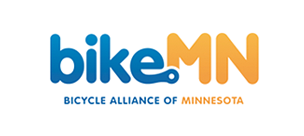A is for Air
- Inflate tires to pressure listed on tire sidewall.
- Use tire gauge to ensure proper tire pressure.
- Check for damage to tire tread and sidewall; always replace damaged tires.
B is for Brakes
- Inspect brake pads and the braking surface of the rim for wear; replace pads or rims if worn past wear indicators.
- Check pad adjustment; make sure they do not rub on tire or sit over the edge of the rim.
- Check brake-lever adjustments. With brakes applied, there should be at least 1 inch between the lever and handlebar.
C is for Cranks, Chain, and Cassette
- Ensure crank bolts are tight.
- Check chain for wear and proper lubrication. Chain should not be oily, but not completely dry.
- If chain skips on the freewheel or cassette, you may need an adjustment or a new parts.
Q is for Quick Releases
- Wheel hubs need to be tight in the bike frame. If tight enough, your hub quick release lever should leave a slight indent in your palm when closing.
- Hub quick releases should point to the back of the bike to ensure they don’t catch on anything, thereby releasing the wheel.
- Ensure quick releases are completely closed without being obstructed by the frame or fork.
- Inspect brake quick releases to ensure that brake cables are re-engaged.
- Inspect quick release at seat post (if applicable).
✔ is for “Check it Over”
- Inspect the bike for loose or broken parts. Tighten, fix, or replace them before you ride.
- Take a quick ride to ensure everything is working properly.
- Pay extra attention to your bike during the first few blocks.
If you are not comfortable making any of these adjustments, take your bike to a local shop for a basic tune up or refer to this DIY resource: www.parktool.com/blog/repair-help.

